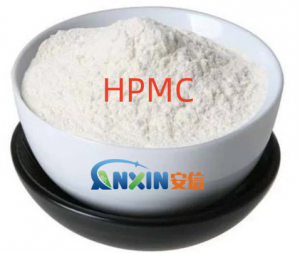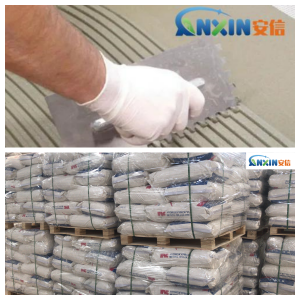In modern building construction, tile laying is a common and crucial process. Tile adhesives are widely used to ensure strong tile adhesion, ease of installation, and durability of the finished product. Hydroxypropyl methylcellulose (HPMC) is an essential additive in tile adhesives. So, what is HPMC itself? What role does it play in tile adhesive and, ultimately, in tile installation?
1. The Chemical Nature of HPMC
HPMC is a cellulose ether compound, a nonionic polymer made from natural cellulose through a series of chemical modifications. Its basic skeleton is derived from cellulose, and its unique physical and chemical properties are achieved by introducing methoxy (–OCH₃) and hydroxypropyl (–OCH₂CHOHCH₃) substituents into the molecular chain. Basic molecular formula: C₆H₇O₂(OH)₃₋ₓ(OCH₃)ₓ(OC₃H₆OH)ᵧ
Appearance: Typically a white or off-white, odorless, and tasteless powder.
Solubility: Soluble in cold water to form a transparent or translucent colloidal solution, but insoluble in hot water and most organic solvents.
Chemical Properties: Non-ionic and stable, it does not react chemically with cement, hydration products, or other common inorganic chemicals.
Hydroxypropylmethylcellulose (HPMC) is not a “chemical substance inherent in ceramic tiles,” but rather an additive used in the tile installation process through tile adhesive. It primarily exists as a dispersion in the cement mortar system, imparting excellent workability to the tile adhesive.
2. The Main Function of HPMC in Tile Adhesive
Tile adhesive is primarily composed of cement, sand, fillers, and polymer additives, with HPMC acting as a “functional additive.” Its chemical properties determine its role in tile installation:
2.1. Water Retention
Cement requires ample water for hydration during the hardening process. HPMC’s molecular chains bind to water molecules, significantly increasing the tile adhesive’s water retention and preventing rapid evaporation, thereby ensuring full hydration of the cement and enhancing bond strength.
2.2. Thickening and Rheology Control
HPMC’s high molecular weight structure imparts a certain viscosity to the tile adhesive, improving its flow and thixotropy. This prevents tile from falling and ensures easy application and even spreading of the slurry during installation.
2.3. Extending Open Time
When laying tiles, installation workers often need time to adjust their positions. HPMC can slow water loss and surface drying, extending the tile adhesive’s open time and increasing the tolerance for errors during installation.
2.4. Improving Adhesion
HPMC’s inherent colloidal properties enhance the wettability and adhesion between the tile and the substrate, making the tile installation more secure and less prone to hollowing and falling.
2.5. Anti-slip Performance
Tile adhesives are prone to slipping during vertical installation. The thickening properties of HPMC effectively counteract gravity and secure the tiles in place.
3. Relationship between HPMC and the Chemical Environment During Tile Installation
Although HPMC is an organic polymer, it is chemically very stable and maintains its functionality in alkaline environments, such as cement slurry. This is crucial, as the base of tile adhesive is cement mortar, which typically has a pH of around 11–13.
Relationship with Cement Hydration Products: HPMC does not react with calcium hydroxide, calcium silicate hydrates, and other substances, but instead regulates the hydration environment through physical interactions.
Combination with Redispersible Polymer Powder (RDP): HPMC is often used in conjunction with polymer powders to further enhance the flexibility and crack resistance of tile adhesives.
Weather Resistance: HPMC is evenly distributed throughout the hardened tile adhesive system and is not easily degraded by temperature or humidity fluctuations, maintaining long-term stability.
Therefore, from a chemical perspective, HPMC is a stable polymer additive in tile adhesive. It does not participate in chemical reactions with cement, but rather improves application results by adjusting physical properties.
4. Why is HPMC necessary for tile adhesive?
Without HPMC, tile adhesive is prone to the following problems:
Rapid water loss after application, resulting in insufficient adhesion;
The slurry is too thin or too thick during application, making it difficult to control;
The open time is too short, making it difficult to operate normally;
Frequent tile sagging, hollowing, and falling off.
HPMC has become a core chemical additive in tile adhesive formulations. Its presence ensures the convenience and reliability required for modern tile installation.
The chemical substance in HPMC tiles refers to hydroxypropyl methylcellulose itself. It is a nonionic cellulose ether derived from chemically modified natural cellulose. Its primary functions in tile adhesive include water retention, thickening, extending open time, improving adhesion, and resisting slippage.
Post time: Sep-08-2025

